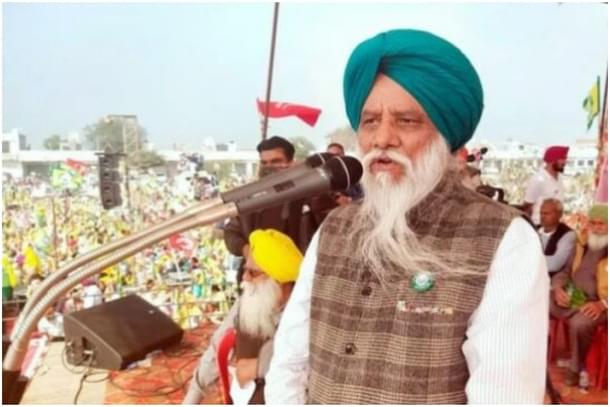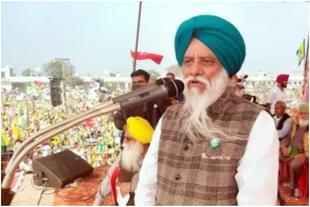Politics
Punjab 2022: Farmer Groups Enter Politics; Which Spot Will They Occupy In An Already Crowded Field?
Tushar Gupta
Dec 27, 2021, 03:54 PM | Updated 03:54 PM IST
Save & read from anywhere!
Bookmark stories for easy access on any device or the Swarajya app.


The crowded lineup of the Punjab Assembly Elections of 2022 has another addition. The farmers that were a part of the Samyukt Kisan Morcha have come together to form the Samyukt Samaj Morcha, a political outfit independent of the Rakesh Tikait faction.
The outfit will be led by Balbir Singh Rajewal and is expected to contest all the 117 seats in the upcoming elections, poised to be one of the most interesting electoral encounters the country has ever seen, given the fragmented vote banks and the number of contenders. To top it all off, there’s the political hangover from the recent protests which ended with the repeal of the three farm laws.
Amongst the existing factions that include one of BJP with Captain Amarinder Singh’s (CAS) new party, the Punjab Lok Congress, the existing Congress government under CM Channi and Navjot Singh Sidhu, the Shiromani Akali Dal (SAD) along with the Bahujan Samaj Party (BSP), and the Aam Aadmi Party (AAP), what is the ball game for this new entrant?
Firstly, the party will not be the favourite to sweep the state of Punjab, even after claiming victory at Singhu. While they will enjoy some scattered support across all constituencies, they will do more damage as vote-cutters for other factions rather than claiming the seats themselves. In what became a three-way contest in 2017 between the Congress, AAP, and SAD-BJP, 41 of the 117 seats saw winning margins of less than 10,000 votes. In 2022, with more factions and political turmoil on the cards, especially with CAS’ new party, the margins will only narrow.
Thus, where could the loyalties of the new party, the Samyukt Samaj Morcha, be? There are two theories to this. One, while the SSM has openly denied the rumours of them allying with AAP, they could prove to be AAP’s B-Team in the state. Capturing significant vote share on some seats in the urban areas, they could hamper the chances of other factions, thus giving the AAP an edge.
However, there is another side to this. What if the SSM, buoyed by its victory, looks to cut through the vote of the AAP. Even with the political turmoil, there is a loyal vote share of the Congress under Channi, CAS, and even the Akalis. So, where will the SSM find its new voters, and what if both AAP and SSM end up chasing the same set of voters?
There’s some news for the AAP. While their performance in 2014 and 2017, in the state, was credible, their downfall in 2019 in all constituencies but one raised doubts about them being the favourites in 2022. However, if the Chandigarh Municipal Corporation results are any indicator, there is some hope for AAP. Even though the UT elections are not linked to the state election of Punjab, AAP would only draw strength from its performance in the state’s capital.
This is a different election in Punjab for a lot many reasons. Firstly, for a very long time, and fortunately so, no election has been this polarised in terms of Hindu and Sikhs, or even amongst the different caste factions amongst the Sikhs. Two, the last four elections were mostly binary. Even in 2017, the competition was between AAP and Congress, with SAD-BJP being an obvious loser after 10-years of government plagued with numerous issues.
Assuming there are three factions in the fray (obvious Congress-AAP alliance, SAD-BSP, Captain-BJP and whoever they can find), and a polarised electorate, there is every possibility of a hung assembly and this is where anyone could emerge as the kingmaker by virtue of either acting as a vote-cutter or by winning 5-7 assembly seats. For SSM, this would be the ideal endgame.
Tushar is a senior-sub-editor at Swarajya. He tweets at @Tushar15_





